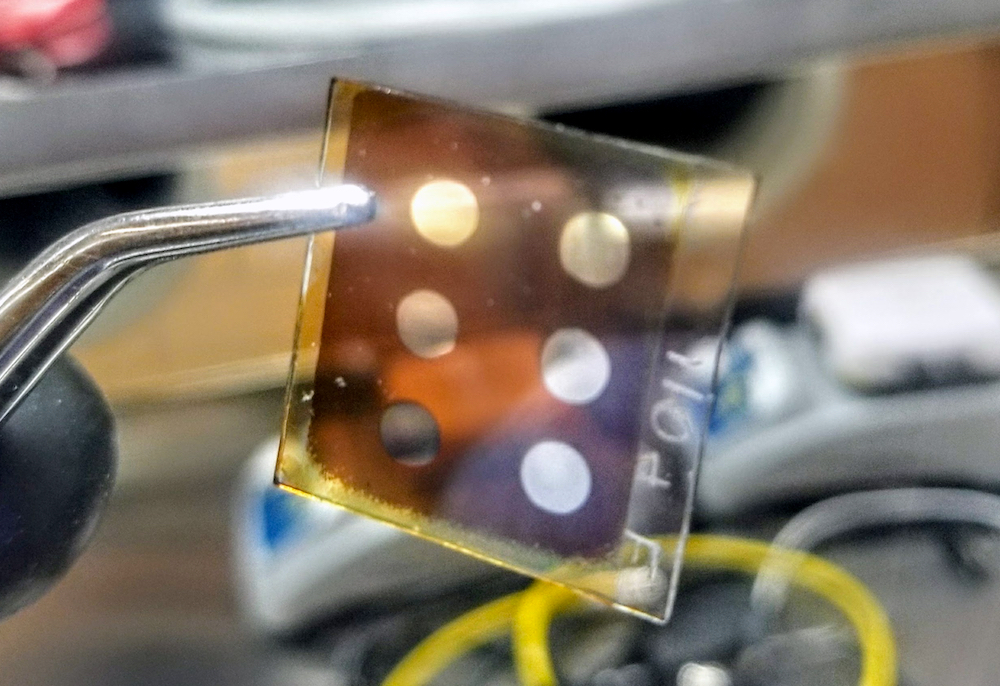From pv magazine International
Researchers from Iowa State University in the U.S. have created a flexible perovskite solar cell with 11.8% efficiency and a strong resistance to high temperatures.
The scientists used a layer-by-layer vapor deposition technique with thin layers of lead iodide (PbI2) and caesium bromide (CsBr) precursors to fabricate inorganic mixed halide perovskite solar cells. “This vapor deposition technique is consistent, leaves no contaminants, and is already used in other industries so it can be scaled up for commercial production,” the research group said.
The researchers specified that the use of inorganic compounds such as cesium has contributed to making the cell resistant to higher temperatures. They claim that the cell showed no thermal degradation even at 200 degrees Celsius in a 72-hour X-ray diffraction analysis.
According to the scientists, the cell has a significant thermal stability and a band gap of 1.87 electron volts (eV). These two characteristics combined, they further explained, make the PV device ideal for applications in tandem junction cells for use in real-life environments with high solar radiation and ambient temperatures exceeding 55 °C in the summer, and silicon cell module temperatures approaching 86 °C.
“This study demonstrates a more robust thermal stability of inorganic perovskite materials and solar cells at higher temperatures and over extended periods of time than reported elsewhere,” the researchers wrote in the paper Thermally Stable, Efficient, Vapor Deposited Inorganic Perovskite Solar Cells, published in ACS Applied Energy Materials.
This content is protected by copyright and may not be reused. If you want to cooperate with us and would like to reuse some of our content, please contact: editors@pv-magazine.com.









By submitting this form you agree to pv magazine using your data for the purposes of publishing your comment.
Your personal data will only be disclosed or otherwise transmitted to third parties for the purposes of spam filtering or if this is necessary for technical maintenance of the website. Any other transfer to third parties will not take place unless this is justified on the basis of applicable data protection regulations or if pv magazine is legally obliged to do so.
You may revoke this consent at any time with effect for the future, in which case your personal data will be deleted immediately. Otherwise, your data will be deleted if pv magazine has processed your request or the purpose of data storage is fulfilled.
Further information on data privacy can be found in our Data Protection Policy.